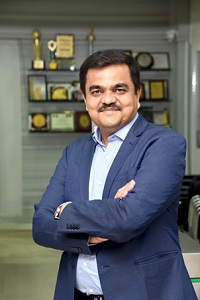Interview: Ashish P Dhakan, MD & CEO, Prama Hikvision India Pvt Ltd.
How has your growth been in the last couple of years as a brand? Has this growth been in sync with the country’s economic growth?
We have been able to add value as a brand in terms of product innovation, consistent quality and agile service support. Our ‘Make-in-India’ manufacturing facility proved to be a key factor in spurring growth and expansion of the video surveillance market. In other words, we were able to match our market growth with the world’s fastest growing economy and upbeat market sentiment. The security systems market is expanding due to a big surge in demand from across the verticals. Even the competition is on the rise due to new players joining the fray. The security market is poised to touch unprecedented heights due to various facets of the burgeoning Indian economy, such as, infrastructure development and ongoing other strategic projects.
Hikvision as a brand, is currently leading the market with the largest market share in the segment. We are committed to our ecosystem partners and end-users with a consistent customer centric approach, product innovation, excellent quality and agile service support. We are a pure play business to business (B2B) channel driven company focused on growth, mutual trust and long term relationships. We are in a rapid expansion mode. We are grateful to our channel partners and end-users for their impeccable trust. We stand committed to the security professional community of dealers, distributors, installers, system integrators and consultants.
What other verticals of the security industry are you planning to cover in the coming years?
Over the years, we have been strengthening our position in the traditional vertical markets of Smart Cities, City Surveillance, Homeland Security, Real Estate, Banking-Financial Services and Insurance (BFSI), Retail, Gems and Jewellery, Logistics, Transportation, Education, Pharma, Healthcare, Hospitality, Tourism, Heavy Industries and Oil & Gas, etc. With our vast experience and expertise in these verticals, we are developing highly specialised and customizable solutions as per the requirements of the end-users.
However, there are new verticals emerging as new trends emerge with the changing times. The evolving new verticals of the future are linked to technology, they encompass E-Commerce, Logistic Hubs, Smart Mobility, Stat-up Ecosystem, Smart Farming, Renewable Energy and Industry 4.0, etc.
What are the trends you see in the Indian Electronic Security Market in 2023?
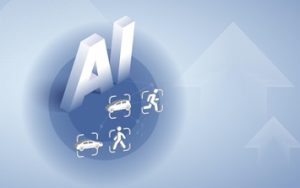 The security industry has continued to shift, adapt, and develop in spite of challenges. Several trends have even accelerated. Beyond traditional ‘physical security’, a host of frontiers like AI, cloud computing, IoT, and cyber security are being pioneered by entities big and small in our industry. By all appearances, the security industry is in a stage of redefining itself. It is moving from fundamental security and safety practices to encompass a wider scope of activity that will expand the ambit of safety while also bringing new levels of intelligence and sustainability to communities, companies and societies. Here, Hikvision would like to share some of our ideas and expectations about the key trends that will likely shape the security industry in the future.
The security industry has continued to shift, adapt, and develop in spite of challenges. Several trends have even accelerated. Beyond traditional ‘physical security’, a host of frontiers like AI, cloud computing, IoT, and cyber security are being pioneered by entities big and small in our industry. By all appearances, the security industry is in a stage of redefining itself. It is moving from fundamental security and safety practices to encompass a wider scope of activity that will expand the ambit of safety while also bringing new levels of intelligence and sustainability to communities, companies and societies. Here, Hikvision would like to share some of our ideas and expectations about the key trends that will likely shape the security industry in the future.
• AI will be everywhere
Nowadays, Artificial Intelligence is quite common in the security industry. More customers in the industry have recognized the value of AI, and have found new uses for AI applications in various scenarios. Along with ANPR, automated event alerts, and false alarm reduction, AI technologies are being used for wider applications, like personal protective equipment (PPE) detection, fall detection for the elderly, mine surface detection, and much more.
• AIoT will digitise and pervade industry verticals
With more security cameras and other security devices being connected to the network, the security industry is becoming an important part of an IoT world, enriching its visual capabilities. It’s apparent that the boundaries of the security industry are blurring, going well beyond the physical security arena. Meanwhile the popularisation of AI technology enables the connected devices to become intelligent “things” in the IoT world. The combination of AI and IoT, or as we call it, AIoT, is taking the security industry to a higher plane, automating the workflows and procedures of enterprises and aiding in the digital transformation of various industry verticals such as energy, logistics, manufacturing, retail, education, healthcare, etc.
From our perspective, AIoT brings more possibilities to the industry with rapidly expanding applications for security devices and systems. Meanwhile, more perception capabilities like radar, Lidar, temperature measuring, humidity sensing, and gas leak detection are being added to security devices and systems to make them more powerful.
• Converged systems will break down data silos
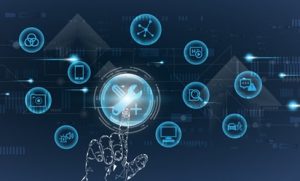 Workers throughout private enterprises and public service sectors alike would jump at the chance to get rid of obstructive “data silos.” Data and information scattered and isolated in disparate systems or groups create barriers to information sharing and collaboration, preventing managers from getting a holistic view of their operations. Here, the convergence of various information systems has been proven to be an effective approach – hopefully enough to break down those silos and bring greater efficiency.
Workers throughout private enterprises and public service sectors alike would jump at the chance to get rid of obstructive “data silos.” Data and information scattered and isolated in disparate systems or groups create barriers to information sharing and collaboration, preventing managers from getting a holistic view of their operations. Here, the convergence of various information systems has been proven to be an effective approach – hopefully enough to break down those silos and bring greater efficiency.
• Cloud-based solutions and services will be essential
Like AI, the cloud is not a new trend in our industry, but it is an expanding one. From small business markets to enterprise levels, we can see the momentum push more and more businesses to leverage cloud-based security solutions and services. And, as we are witnessing even now, the pandemic has accelerated the movement to cloud-based operations for people and businesses around the world.
• Crystal clear security imaging will be standard in any weather, under any conditions, any time of day or night
It is always vital for video security cameras, as a core function to maintain image clarity and capture details 24 hours a day, in any weather and under any condition. Cameras with low light imaging technology that renders high-definition and full-colour images at night and in almost completely dark environments have been highly welcomed by the market. We are taking note of the impressive technology and applying them to more camera models, including 4K, Varifocal and PTZ cameras. Moreover, for clearer video security imaging in poor visibility – especially in severe weather – high-performance imaging sensors, ISP technology, and AI algorithms are being employed, enabling cameras to maintain clarity and details of the view.
• Biometric access control will bring higher security and efficiency
In the past decades, authorised access control has moved a long way away from the keys, pin codes and ID cards. We now find ourselves stepping into the next phase of the biometrics era. The access control market is rapidly becoming occupied by biometric authentications, from fingerprint and palm print recognition to facial and iris recognition.
• The Zero Trust approach will take the cybersecurity spotlight
With more security devices connecting over the Internet than anyone ever imagined, cybersecurity has become an immense challenge in the industry. A strategic initiative that developed to prevent data breaches by eliminating the concept of trust from an organisation’s network architecture, Zero Trust is rooted in a philosophy of “never trust, always verify.” The concept has been widedly accepted within the IT industry and it is now also slowly but steadily moving into the physical security realm, as it gradually becomes an important part of the IoT world.
• Green manufacturing and low-carbon initiatives will take big strides
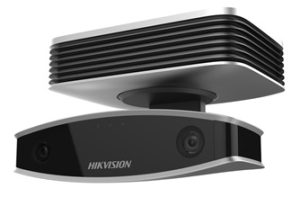 The consensus is in: low-carbon initiatives are valued by societies around the world. In the security market, we have seen products featuring low-power-consumption become the preferred options for customers, and demand for solar-powered cameras is increasing.
The consensus is in: low-carbon initiatives are valued by societies around the world. In the security market, we have seen products featuring low-power-consumption become the preferred options for customers, and demand for solar-powered cameras is increasing.
There has been a rapid growth of the access control market since the pandemic broke out with emphasis on touchless. Now that the pandemic has eased, do you think growth will slow down? What are the new trends in this area?
The people across the globe have seen the great value delivered by touchless access control experience provided by our MinMoe Face Recognition Terminals in terms of seamless access with health and hygiene considerations. The pandemic has redefined the legacy security technologies and updated them with AI Algorithms and Smart Solutions. The groundbreaking product innovations done by Hikvision are widely accepted and appreciated by the end-users and patrons. These smart product innovations are fueling the growth of the security industry.
Iris Recognition is the latest trend in the high security projects for secure access. We have recently launched our MinMoe Iris Recognition Terminal, providing a higher level of security solutions for the access control market. Hikvision’s MinMoe Iris Recognition Terminal can quickly verify unique characters of an iris within 1 second, and the recognition distance can be as far as 70cm!
The terminal also features colour imaging and video anti-counterfeiting, to guarantee accuracy and safety of access authentication. Biometric Access Control brings inherent advantages, like higher security and efficiency with reduced counterfeiting. They verify within seconds – or fractions of seconds – and prevent unnecessary physical contact. Iris and facial recognition offer touchless access control – a hygienic practice more and more favoured in the market.
We see great advantages in the ‘touch-free’ experience that face recognition provides. With advanced deep learning technology and diverse practical functions, we expect that MinMoe Face Recognition Terminals can bring more security and efficiency to our small and medium sized customers, making access control and time attendance much easier. The enhanced verification rates and accuracy ensures a pleasant, “touch-free” experience for users – a vast improvement over swiping ID cards or fingerprint scans.
AI and ML has steadily been gaining forays in every aspect of security with the surveillance sector utilising it heavily. How have you leveraged these technologies in your products and systems to bring benefits to the end users in India?
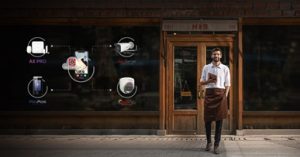 In this ever-expanding era of artificial intelligence (AI), Deep Learning has become the foundational technology for the security industry. Hikvision’s impressive AI analytics technologies refer to a subset of artificial intelligence that uses machine learning to gain insights, find patterns, and discover relationships in the data. In practice, it is the process of automating the analysis that a human would normally perform.
In this ever-expanding era of artificial intelligence (AI), Deep Learning has become the foundational technology for the security industry. Hikvision’s impressive AI analytics technologies refer to a subset of artificial intelligence that uses machine learning to gain insights, find patterns, and discover relationships in the data. In practice, it is the process of automating the analysis that a human would normally perform.
In the field of physical security, AI analytics uses powerful algorithms to automate detection, categorization, and analysis of objects and motions in a camera’s view. It reduces costs, speeds up responses, and facilitates new practices and processes. Easy and affordable Artificial Intelligence has come to the mass market and a diverse set of users.
DeepinView Series Cameras feature Hikvision’s state-of-the-art video analytics based on deep learning technology. These cameras bring AI edge computing to life, enabling automated detection, categorization, and analysis of objects in view with unparalleled accuracy and efficiency.
The AI Analytics use cases are as follows:
Facial Recognition: Facial recognition technology uses dedicated algorithms and mathematical patterns to process and store biometric data. It is by far one of the safest identification methods to effectively reduce the risk of unauthorised access.
Vehicle Identification: It is a technology that identifies vehicles by reading their plate characters and features including colour, type, manufacturer, and even travel direction – all automatically with algorithm-embedded cameras at entrances & exits or on the roadways.
AcuSense Technology: Hikvision’s AcuSense technology embeds deep-learning algorithms into select security cameras and video recorders to automatically detect humans and vehicles through real-time video analytics and push instant notifications to users’ mobile devices. By minimising false alarms triggered by animals, falling leaves, heavy rain, and other moving objects, AcuSense enables businesses and homeowners to focus security resources on real threats.
Hard Hat Detection (PPE Detection Technology): Hikvision’s PPE detection technology is applied in several high-risk working environments. Automated PPE detection helps the construction business reduce security costs and enjoy more intelligent, more effective security overall.
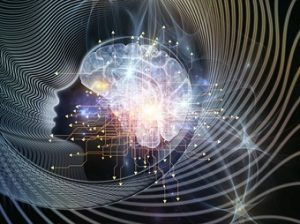 Fall Detection: Fall detection is a technology that uses machine perception and video analytics to detect persons falling. It was designed especially for those who suffer from illnesses or disabilities, triggering instant alerts to authorised personnel so that they can take immediate actions.
Fall Detection: Fall detection is a technology that uses machine perception and video analytics to detect persons falling. It was designed especially for those who suffer from illnesses or disabilities, triggering instant alerts to authorised personnel so that they can take immediate actions.
People Counting: People counting is a technology that uses specifically designed cameras and deep-learning algorithms to automatically and dynamically measure customer flow through a door or within a certain area.
Heat Mapping: heat mapping to know the popularity of goods in the shopping area with the help of AI Analytics.
Queue Detection: Queue Detection is used to monitor the queuing situation in real-time through AI Analytics.
How are your manufacturing plants faring? How much import substitution has happened, in line with the PM’s vision of Atma Nirbhar Bharat?
Make-in-India 2.0 is a collective success for all the stakeholders of Hikvision India and it is realising the vision of Atmanirbhar Bharat. We are committed to the ‘Make-in-India’ vision with a long term perspective. Our state-of-the-art manufacturing facility at Vasai is a living testimony of excellence in manufacturing.
These solutions are customised for the Indian environment and conditions and specific local requirements. Our mission is to be aligned with the government of India’s ‘Make-in-India’ program to transform India into a global design and manufacturing hub. Through the local state-of-the-art manufacturing plant, Hikvision India is manufacturing its wide range of products and solutions as per our commitment to ‘Make-in-India’ vision.
There is a significant progress in import substitution happening due to our ‘Make-in-India’ manufacturing facility. The ‘Make-in-India’ program is helping to lower the dependence on imports and boost local production of high-value video security products. The other reasons that are helping to regain the momentum in local manufacturing include, economic stability, robust legal system, cost effective labour, skilled workforce, high quality production, cost savings on import duties, domestic market demand and the ease of doing business.



